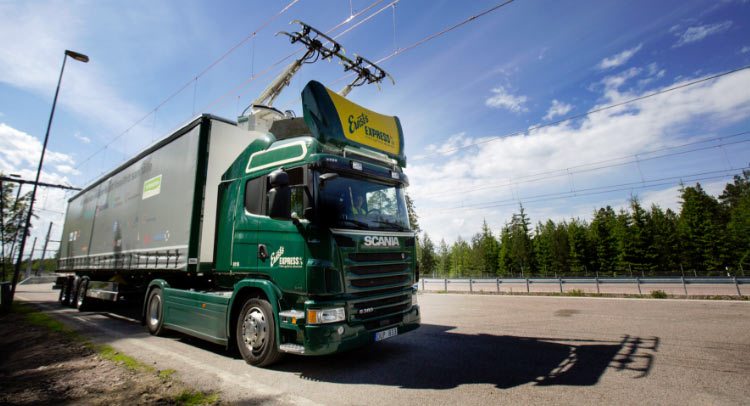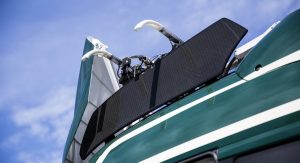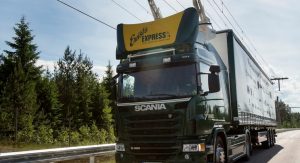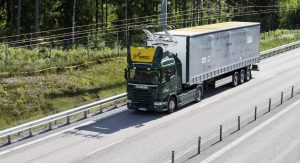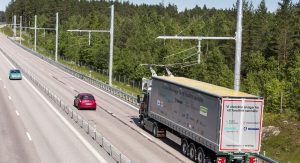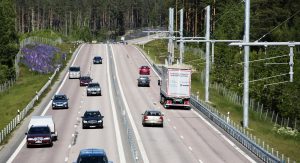Australia’s need to move freight efficiently through the vast and remote Outback gave birth to multi-trailer “roadtrains”, but the Swedes took the idea more literally.
Unlike the Australian roadtrains – named after their impressive length – Sweden’s proposal for the future of efficient hauling is an overhead line “electric road”, which seems inspired from the world of locomotives and trolleybuses.
Inaugurated on June 22, near the city of Gävle in central Sweden, the project is the result of a unique collaboration between the Swedish Government and the private sector, as it aims to demonstrate the path towards fossil-free transportation.
Stretching for two kilometers in length, it uses conductive technology developed by Siemens, and Scania-supplied electrically-powered G 360 4×2 trucks, which will operate under real traffic conditions.
The road permits the trucks to function as electric vehicles when on the electrified lane and as regular hybrid vehicles at other times (all the trucks on the road are hybrid and Euro 6-certified, running on biofuel).
The Scanias receive electrical juice from a pantograph power collector mounted behind the cab, connected to overhead power lines. Moreover, when the trucks go outside the electrically-powered lane, the pantograph is disconnected and they can rely on their 9-litre, 360hp bio-fuel combustion engine or the battery-operated 130kW, 1050Nm electric motor.
“The electric road is one important milestone on the journey towards fossil-free transport. Scania is committed to the success of this project and is committed to sustainable transport solutions,” said Scania’s head of Research and Development Claes Erixon.
According to Scania, the company sees the electric road as being a key component in achieving Sweden’s ambition of an energy-efficient and fossil-free vehicle fleet by 2030.



